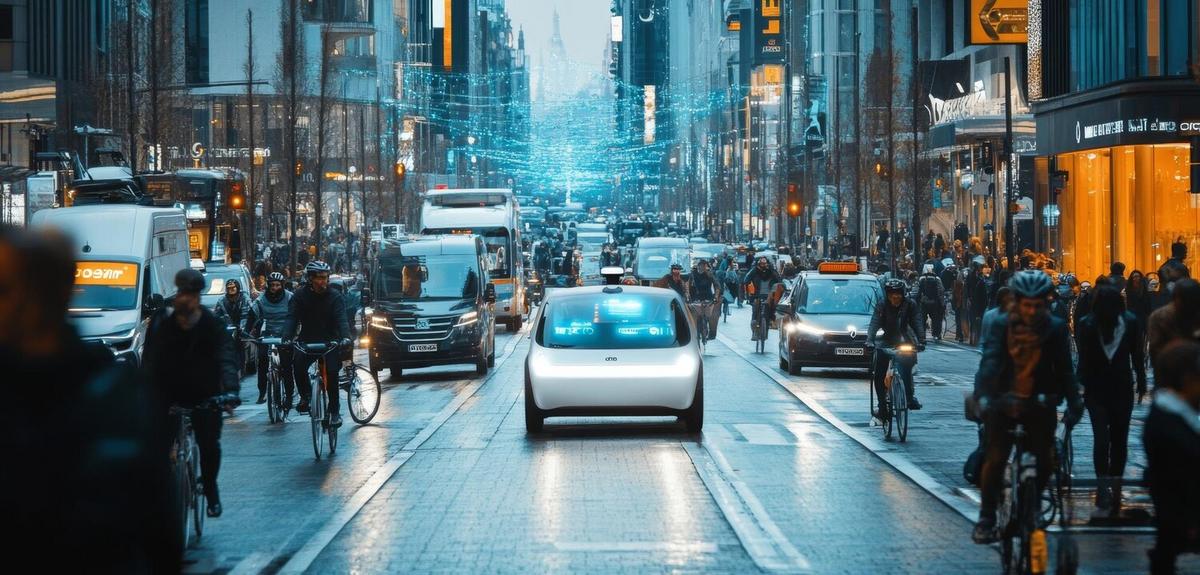
How Autonomous Vehicles Could Change Urban Planning
As cities evolve and technology advances, the integration of autonomous vehicles (AVs) promises to redefine urban landscapes in profound ways. This transformation touches on everything from traffic management to public space utilization, making it a crucial topic for urban planners and city dwellers alike.
Autonomous vehicles have the potential to significantly alter the way we approach urban planning. By reducing the necessity for extensive parking spaces and improving traffic flow, these vehicles could help cities reclaim valuable land for green spaces or housing.
The Impact on Traffic and Parking
One of the most immediate effects of autonomous vehicles is the potential reduction in traffic congestion. According to a study by the Boston Consulting Group, the adoption of AVs could decrease traffic delays by over 20% in metropolitan areas. This is due to AVs’ ability to communicate with each other, optimizing routes and reducing bottlenecks.
Additionally, with the rise of shared autonomous vehicle fleets, the need for personal vehicle ownership is expected to decline. This shift could see a dramatic reduction in the number of parking spaces required, freeing up land for other uses. Cities like San Francisco are already exploring the potential of transforming parking lots into parks and residential developments.
Reimagining Urban Spaces
The decrease in required parking space opens up numerous possibilities for urban renewal. Imagine a city where former parking lots become vibrant community hubs or green parks. This vision is supported by urbanist Brent Toderian, who suggests that “less parking means more room for people-friendly spaces.”
Moreover, AVs could contribute to safer streets. With advanced sensors and algorithms, these vehicles are less prone to accidents caused by human error, potentially reducing the number of traffic-related injuries and fatalities.
Challenges and Considerations
Despite the promising benefits, there are challenges that need addressing. The transition to autonomous vehicles requires significant investment in infrastructure and technology. Cities must adapt their roads and signage to accommodate these vehicles, which can be a costly endeavor.
Additionally, there is a need for policy frameworks that ensure equitable access to autonomous transportation. Without careful planning, there is a risk that AVs could exacerbate existing inequalities in urban mobility.
Consider implementing pilot programs in smaller urban areas to test the integration of autonomous vehicles. This can help identify potential challenges and solutions before a wider rollout.
Table: Potential Changes in Urban Planning
| Aspect | Current State | Potential Change |
|---|---|---|
| Traffic Flow | Congested | Smoother with AVs |
| Parking Spaces | Extensive | Minimized |
| Land Use | Parking Lots | Green Spaces |
| Safety | Human Error | Reduced Accidents |
| Public Transport | Underutilized | Increased Efficiency |
| Infrastructure Costs | High | Potentially Reduced |
| Accessibility | Inequitable | Improved with AVs |
| Environmental Impact | High Emissions | Reduced with EVs |
Frequently Asked Questions
How will autonomous vehicles affect public transportation?
Autonomous vehicles are expected to complement public transportation by providing efficient first-mile and last-mile solutions, potentially increasing overall usage.
What are the environmental benefits of autonomous vehicles?
Many autonomous vehicles are electric, which can lead to significant reductions in emissions and a smaller carbon footprint for urban transport systems.
Will autonomous vehicles make driving obsolete?
While AVs may reduce the need for personal driving, they are likely to coexist with traditional vehicles for the foreseeable future.
Conclusion
In summary, autonomous vehicles hold the promise of transforming urban planning by enhancing traffic efficiency, reducing the need for parking, and enabling safer streets. While challenges remain, particularly in infrastructure and policy, the potential benefits make it an exciting frontier for urban development. As cities plan for the future, embracing autonomy in transportation could lead to more livable and sustainable urban environments.